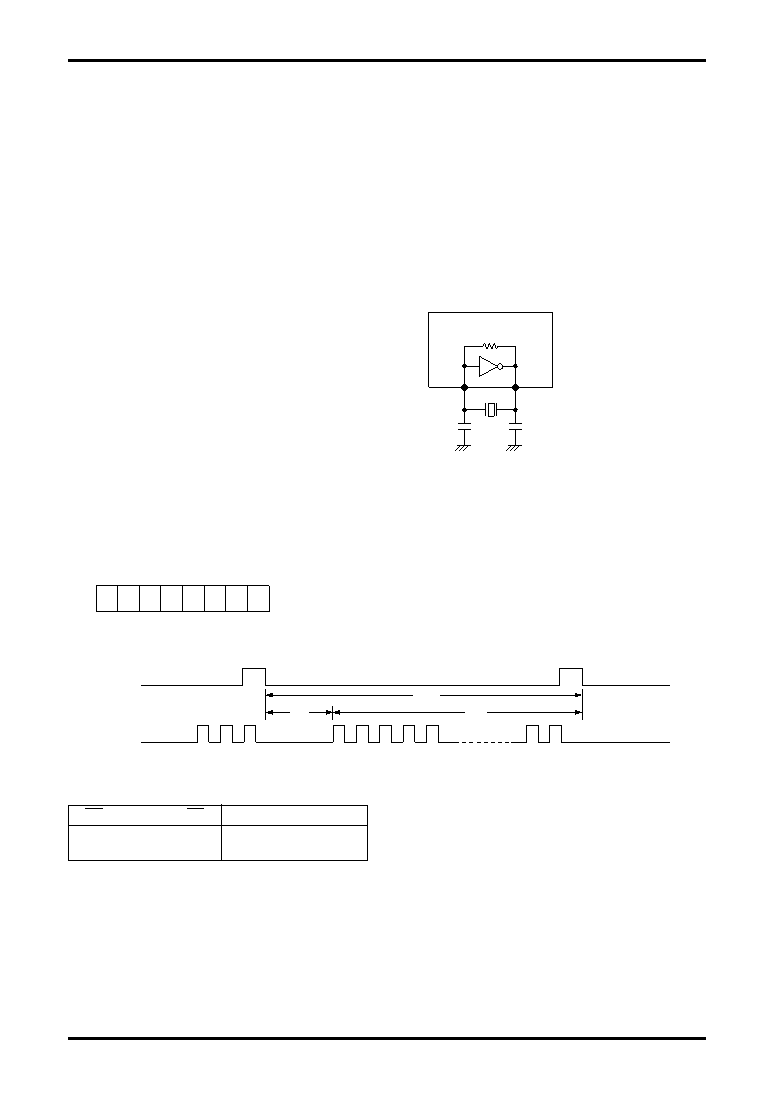- 您現(xiàn)在的位置:買賣IC網(wǎng) > PDF目錄98069 > S1D13305F00A 640 X 256 PIXELS CRT CHAR OR GRPH DSPL CTLR, PQFP60 PDF資料下載
參數(shù)資料
| 型號: | S1D13305F00A |
| 元件分類: | 顯示控制器 |
| 英文描述: | 640 X 256 PIXELS CRT CHAR OR GRPH DSPL CTLR, PQFP60 |
| 封裝: | QFP5-60 |
| 文件頁數(shù): | 66/94頁 |
| 文件大小: | 541K |
| 代理商: | S1D13305F00A |
第1頁第2頁第3頁第4頁第5頁第6頁第7頁第8頁第9頁第10頁第11頁第12頁第13頁第14頁第15頁第16頁第17頁第18頁第19頁第20頁第21頁第22頁第23頁第24頁第25頁第26頁第27頁第28頁第29頁第30頁第31頁第32頁第33頁第34頁第35頁第36頁第37頁第38頁第39頁第40頁第41頁第42頁第43頁第44頁第45頁第46頁第47頁第48頁第49頁第50頁第51頁第52頁第53頁第54頁第55頁第56頁第57頁第58頁第59頁第60頁第61頁第62頁第63頁第64頁第65頁當(dāng)前第66頁第67頁第68頁第69頁第70頁第71頁第72頁第73頁第74頁第75頁第76頁第77頁第78頁第79頁第80頁第81頁第82頁第83頁第84頁第85頁第86頁第87頁第88頁第89頁第90頁第91頁第92頁第93頁第94頁

S1D13305 Series
EPSON
63
Technical Manual
12.2. Supply Current during Display Memory Access
The 24 address and data lines of the S1D13305 series
cycle at one-third of the oscillator frequency, fOSC. The
charge and discharge current on these pins, IVOP, is given
by the equation below. When IVOP exceeds IOPR, it can be
estimated by:
IVOP
∝ C V f
where C is the capacitance of the display memory bus, V
is the operating voltage, and f is the operating frequency.
If VOPR = 5.0V, f = 1.0 MHz, and the display memory bus
capacitance is 1.0 pF per line:
IVOP
≤ 120 A / MHz × pF
To reduce current flow during display memory accesses,
it is important to use low-power memory, and to mini-
mize both the number of devices and the parasitic capaci-
tance.
13. OSCILLATOR CIRCUIT
The S1D13305 series incorporates an oscillator circuit. A
stable oscillator can be constructed simply by connecting
an AT-cut crystal and two capacitors to XG and XD, as
shown in the figure below. If the oscillator frequency is
increased, CD and CG should be decreased proportion-
ally.
Note that the circuit board lines to XG and XD must be as
short as possible to prevent wiring capacitance from
changing the oscillator frequency or increasing the power
consumption.
Figure 52. Crystal oscillator
S1D13305 series
XD
XG
CD
CG
CD = 3 to 20 pF
CG = 2 to 18 pF
Load impedance = 700
(max)
14. STATUS FLAG
The S1D13305 series has a single bit status flag.
D6: X line standby
Figure 53. Status flag
The D6 status flag is HIGH for the TC/R-C/R cycles at the
end of each line where the S1D13305 series is not reading
the display memory. The microprocessor may use this
period to update display memory without affecting the
display, however it is recommended that the display be
turned off when refreshing the whole display.
D7
D0
X
D6
XXXXXXX: Don’t care
Figure 54. C/R to TC/R time difference
tm
tTC/R
LP
XSCL
tC/R
CS
A0
RD
D6 (flag)
0
0: Period of retrace lines
1: Period of display
DISPLAY MEMORY INTERFACE/OSCILLATOR CIRCUIT/STATUS FLAG
相關(guān)PDF資料 |
PDF描述 |
|---|---|
| S1D13600F00A | CRT OR FLAT PNL GRPH DSPL CTLR, PQFP64 |
| S1D13700F02A100 | 320 X 240 PIXELS CRT OR FLAT PNL GRPH DSPL CTLR, PQFP64 |
| S1D13706F00A | 320 X 240 PIXELS CRT OR FLAT PNL GRPH DSPL CTLR, PQFP100 |
| S1D13806F00A | CRT OR FLAT PNL GRPH DSPL CTLR, PQFP144 |
| S1D13A05B00B | 320 X 320 PIXELS CRT OR FLAT PNL GRPH DSPL CTLR, PBGA121 |
相關(guān)代理商/技術(shù)參數(shù) |
參數(shù)描述 |
|---|---|
| S1D13305F00A100 | 制造商:SEIKO 功能描述: |
| S1D13305F00A200 | 制造商:Epson Electronics America Inc 功能描述:Access Mls Drive Method Lcd Chp Set |
| S1D13305F00B | 制造商:EPSON 制造商全稱:EPSON 功能描述:LCD Controller ICs |
| S1D13305F00B100 | 制造商:Epson Electronics America Inc 功能描述:LCD DRVR 3V/3.3V/5V 80-Pin TQFP |
| S1D13501F00A100 | 制造商:Epson Electronics America Inc 功能描述:LCD DRVR 3V/3.3V/5V 80-Pin TQFP |
發(fā)布緊急采購,3分鐘左右您將得到回復(fù)。